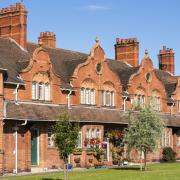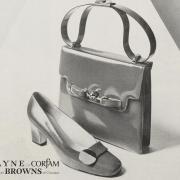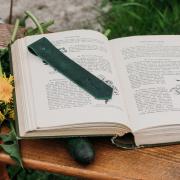The Leycester family, who lived at Tabley for more than 700 years, were landowners of much of the surrounding countryside, and built their first home on an island in Tabley Mere in around 1380. With its crenelated upper storey, great hall and a large central arch formed by two massive cruck beams, it stood proud on the island, home to many generations of Leycester, until 1927, when part of the hall collapsed due to subsidence resulting from the extraction of brine nearby. The building was abandoned and is now a ruin. The family chapel, which also sat on the island, was dismantled and rebuilt in a safer location.

Luckily for the 20th-century Leycesters (by now spelled Leicester) their ancestor Sir Peter Byrne Leicester had, in 1761, commissioned a new hall, in grand Palladian style, out of harm’s way. Sir Peter inherited the estate at age 10, but clearly didn’t enjoy living in the old hall, declaring it ‘old and not commodious’, and as soon as he was able, he commissioned John Carr of York as architect of a new, more commodious home. Building began in 1761 and was completed in about 1769.
Claire Pye, chairman of Tabley House Collection Trust, explains: ‘Palladian architecture was very much a trend of the time. John Carr was very good at spotting trends and, what’s more, had the inestimable value of coming in on budget. He would spend a lot of time with the client before building started, getting everything agreed, and then used the very contemporary approach of standardising elements of the build – for example, his doorways are all designed to be the same size, meaning rather than bring in local artisans to make one door at a time to fill the doorways, he could have them all made at a single location, in Yorkshire, and have them all fitted at once. It’s a marvellous example of very modern thinking and of his project management skills.’

Palladian architecture derived from the work of Venetian architect Andrea Palladio (1508–1580) and evolved from his concepts of symmetry, perspective and the principles of formal classical architecture. This is best seen at Tabley from a distance, across the lawn to the glorious double staircase leading to the house’s original main entrance hall, on the first floor.In this space, known as the Portico Room, there was originally a stone floor, but this was converted to a ballroom in the 19th century, when the family moved the entrance to the other side of the house, and a wooden floor was added.
Visions of young girls dressed à la mode come to mind, with chattering mamas on chairs keeping a close eye on who dances with whom, filled with pride and prejudice.
‘The entrance to the house was done in the Doric style,’ Claire says, ‘with the columns and the portico. The interior is magnificent, but not over-decorative. It was a statement of money and taste. Plaques on the walls signify the four seasons, which would have indicated that the family wealth came from farming and the land.’
There are also two statues, representing Flora and Isis as Roman goddesses.Isis was a nod to those in the know that the Leicesters were Freemasons.

As we move through to the drawing room, we start to see the riches of the Tabley House Collection. Among the Regency works sit two 17th-century pieces, depicting John 1st Lord Byron, the Royalist commander in Cheshire during the Civil War, and the 17th-century Sir Peter Leicester, who was married to John Byron’s sister. The painting of Byron shows a grandly dressed man in yellow, pointing out of frame and with a black slave standing behind him.

By all accounts Byron was not a nice chap, being a very cavalier Cavalier, and ended up fleeing to France in the late 1640s, joining the court in exile. He died there, leaving his wife to muddle through. She achieved this by becoming one of Charles II’s mistresses and led a comfortable remainder of her life.
‘The art collection is the work of a later Leicester, Sir John. His father, Sir Peter, didn’t live a long life and his son inherited when he was only seven years old. Sir John’s mother, Catherine, ran things until John reached adulthood. He had the usual elite education, Eton and Cambridge, and went on the Grand Tour. Interestingly, his letters home don’t suggest this is where he found his interest in art. He was rather more inspired by the landscapes he saw. In one letter he wrote that the Rhine gorge was, ‘like Matlock, but bigger’.

‘His mother was clearly well-read and intelligent. She was a very acute businesswoman, running the estate superbly and adding to his land holdings,’ Claire says.
‘Sir John arrived home in his mid-twenties, in the 1790s, and went on a spending spree. He bought horses and invested heavily in the local militia, becoming Lieutenant-Colonel of the Cheshire Yeomanry, which in 1819 was called to Manchester and took part in the infamous Peterloo Massacre.’
As well as horseflesh and men in uniform, Sir John developed an interest in Regency art, and was one of JMW Turner’s early patrons.
‘He bought several of his works, and indeed Turner came to stay at Tabley Hall. We still retain one of his large paintings here, Windy Day at Tabley, showing the tower on the island, with Tabley House in the background. Sir John backed British art and bought works by British artists. His collection was held in his London home and here, but after his death much of what was kept in London had to be sold, along with the London house, to cover his rather massive debts.
‘What we have here, therefore, is an extremely important collection of Regency art, hanging in the house it was bought for.’

In the Octagon Room, which was a small, more informal sitting room used only by the family, you will find one of the Tabley Collection’s most fascinating pieces – an anamorphic portrait of Charles II. It’s mounted around a cylinder and can only be seen and recognised as a portrait when placed on a mirror custom-designed to make it reveal the hidden portrait.
‘These were found in Jacobite houses,’ Claire explains, ‘and were used by Royalist families when toasting “the King over the water” during the Interregnum.
’ Throughout the house, the art is hung from chains suspended from lions’ heads, a design created by Sir John. The earlier fashion had been to hang paintings from ropes at the rear of the piece, but this made them tip forward, and so picture rails and chains came into fashion. The lion heads are Sir John’s design for hiding the hooks and are quite wonderful.

The collection today belongs to the University of Manchester, but most of the house is maintained as a nursing home.
‘It’s a complicated arrangement, whereby the freehold of the estate is held by Manchester University, since the death of Lieutenant Colonel John Lester-Warren, the last of the line, who died without heirs in 1975,’ Claire explains. ‘He had wanted to leave it all to the National Trust, but because it came with no cash endowment and needed quite some funds committing to repairs and upkeep, they turned down the bequest. Colonel Lester-Warren had said if the National Trust didn’t want it, it should go to an educational charity and the executors of his will decided Manchester University should be the residuary legatee. The university inherited the house and all its art, but also all the work that needed doing to repair and then maintain the house. There were issues with the roof, and the house hadn’t been left completely unscathed by the brine subsidence in the 1920s.

‘When the university took over, the boys’ school fees were supposed to cover costs of maintenance, but as time went on this wasn’t happening and in the 1980s the university gave the school its notice and sought a new tenant who could take on a long lease and be responsible for repairs.’
It took a little while, but serendipitously, the Canadian founder of the Priory clinics, John Hughes, had recently sold the business and was looking for something else to do, and decided to move into care homes. He visited Tabley House and fell in love with it.

‘He set up a new company, Cygnet Healthcare,’ Claire says. ‘The swan is the crest of the old Leycester family, and Cygnet is a nod to that. He submitted plans for a nursing home here, but when it came to the change of use part of the planning permission, Macclesfield Council, as was, said the first floor shouldn’t be part of the nursing home, but should be a museum, housing the art collection of Sir John Leicester (1762–1827), who was the first Lord de Tabley.’
‘This suited John Hughes, as he didn’t want this floor. It’s Grade I listed, so he couldn’t muck around with it, and 17-foot-high ceilings, vast rooms, and the like, weren’t useful to his new business. The other floors he could make suitable, with the room layout and size suitable for adding en suites, etc, for the residents’ rooms.’
This arrangement has allowed for the creation of the Tabley House Collection Trust, which looks after the rooms on the first floor, with the furniture and artworks, while the Tabley House Nursing Home is responsible for the building’s maintenance and care.

Today, as well as housing the Tabley Collection, the house is available for weddings, which take place in the glorious gallery rooms, an expanse created in 1809 from three smaller rooms, and host to an array of marvellous Regency artworks collected by Sir John, including a portrait of the man himself, in his Lord’s robes.
‘And thereby hangs a tale,’ Claire smiles. ‘When Sir John was created the first Lord de Tabley in 1826 (the family having previously been only baronets) he wanted a painting of himself in his Lord’s robes. He was by this time 64 years old, so he sent one of himself done by Joshua Reynolds, in the 1780s, to artist John Simpson, with instructions to “lordify” it with his Lord’s robes, but not to change the head, so he looks considerably younger than he actually was when he achieved his title.’. tableyhouse.co.uk
The photography for this feature was kindly supplied by Christopher John, a professional photographer specialising in landscapes, architecture and interiors. heritagephotographer.co.uk
FRIENDS OF TABLEY HOUSE
The rooms that house The Tabley House Collection are largely maintained and staffed by volunteers from The Friends of Tabley House, who undertake conservatorship of the furnishings (gently cleaning and checking each piece), brushing tapestries of dust and checking the books to ensure no incursions by pests.
They are also engaged in cataloguing the remaining ephemera of the de Tabley estate, which is held in the basement, which has led to the discovery of the letters of a certain Lieutenant General Sir Oliver Leese, 3rd Baronet, KCB, CBE, DSO. Sir Oliver commanded XXX Corps in North Africa and Sicily, second in command under Montgomery, before going on to command the Eighth Army in the Italian Campaign throughout most of 1944.
Sir Oliver was married to the sister of Colonel Lester-Warren, and they had no children either, hence the end of the line of the Leicester family in 1975.
‘We are working on creating an archive of his letter that we hope to publish,’ Claire says. ‘These letters were written to his father-in-law, Cuthbert Leicester-Warren, and encompass military matters, and what his experiences were of the people, the gardens, the flora, etc, he encountered during his time overseas.’
If you wish to volunteer to help as a Friend of Tabley House, email tableyhouse@btconnect.com




























